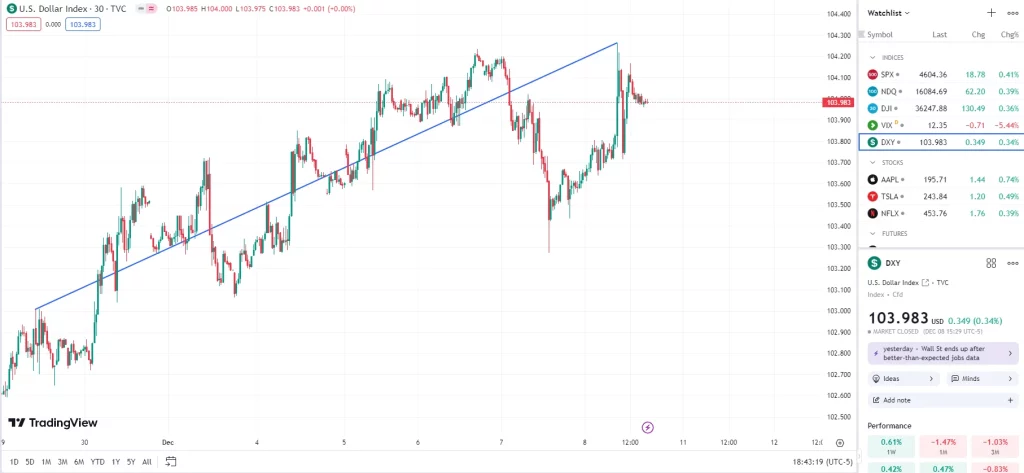Explore top crypto strategies to maximize ROI. Dive into expert tips for the best crypto investment strategies and smart financial growth.
Welcome to the wild west of finance – the cryptocurrency market! As this new landscape continues to evolve rapidly, crypto enthusiasts are wondering: what are the best crypto investment strategies I can use in 2024 to build my portfolio?
This blog breaks down 12 of the top tactics to make the most of your crypto investments next year. Let’s ride!
What are the Best Crypto Investment Strategies
As financial markets evolve across the globe, the concept of investing has significantly transformed, notably marked by the rise of cryptocurrency. While more conventional assets tend to have caps, the sheer amount of crypto- yield potentially exponential returns. However, it’s not all rose-tinted; investing in cryptocurrency carries a certain level of risk.
Crypto investing requires knowledge, understanding of crypto trading, crypto exchange operations, and effective strategies for crypto. Before committing, investors need to grasp complexities tied to the volatility of market prices and security concerns. Despite the inherent risk of investing and potential setbacks, the high rewarding prospect it presents makes it an appealing option for many.
In this article, we aim to touch on various facets related to investing in crypto, from understanding the best strategies to mitigating risks, providing a comprehensive guide to beginners looking to navigate this decentralized digital currency landscape.
1. Dollar-Cost Averaging (DCA)

Dollar-cost averaging (DCA) is a popular investment strategy used by many crypto investors, especially those new to crypto. It involves investing a fixed dollar amount into a single crypto coin or a crypto allocation strategy at regular intervals over time, regardless of price.
The goal of DCA is to reduce volatility in investing and take advantage of dips in price when buying crypto. By investing consistently, an investor builds their position over time and ends up purchasing crypto at different prices without trying to time the market. This helps avoid making all investment decisions at potentially bad times.
Before investing, due diligence should be done on whether crypto is a good, viable long-term investment and matches your financial goals. While crypto has seen tremendous growth recently and could already be a viable long-term holding, it is still highly speculative and prices can swing wildly in the short-term.
Longer-term, cryptocurrency is seen by many as a good long-term investment as it is a digital currency being rapidly adopted and integrated into finance and technology systems globally. Top cryptocurrencies like Bitcoin and Ethereum provide a way to diversify portfolios.
In addition to DCA, other trading strategies like swing trade crypto can also be viable with crypto, providing additional ways of investing money over time. By using a mix of strategies, investors can build crypto positions tailored to their own risk profiles and financial situations.
2. Buy and Hold (HODL)
A straightforward yet effective approach is to simply buy cryptocurrencies and hold them long-term. This “set and forget” strategy capitalizes on the inherent volatility of the crypto market.
As an investor, you need patience and discipline to HODL during market swings. But historically, Bitcoin and other major cryptos have increased substantially in value over longer timeframes.
Here is a summary of the Buy and Hold (HODL) cryptocurrency investment strategy:
What is it:
- A straightforward long-term investment strategy where you buy cryptocurrencies and hold onto them for an extended period of time, rather than actively trading them.
How it works:
- The idea is to buy cryptocurrencies and resist the urge to sell when prices are volatile. By holding through market swings, investors can benefit from long-term price appreciation.
Pros:
- Simple passive strategy requiring less active monitoring than trading
- Removes emotion-driven decision making during market dips or crashes
- Historically major cryptos like Bitcoin see substantial gains over long periods
Cons:
- Requires patience as holdings can drop significantly before eventually recovering
- Not all cryptocurrencies survive long-term
- Forgoes potential profits from well-timed trading
Key things to remember:
- Works best for investors with longer time horizon (at least 1-2 years)
- Crucial to only buy established, reputable cryptocurrencies with good long-term prospects
- Portfolio diversification across asset classes still important
The HODL strategy capitalizes on the long-term growth potential of quality cryptocurrencies. By holding through ups and downs, investors give their holdings time to substantially appreciate.
3. High-Frequency Trading
For more active crypto traders, high-frequency trading strategies involve making multiple trades per day, based on small fluctuations in price, technical indicators and patterns, volume, etc.
This fast-paced approach requires in-depth research and analysis. But for seasoned day traders, it can lead to consistent profits.
Here are key points about the high-frequency trading:
- Involves making multiple trades per day, based on small price movements
- Requires advanced analysis of technical indicators, price patterns, volume etc.
- Traders aim to profit from many small wins that add up through ultra-fast automated trading
- Very fast-paced and complex strategy best suited to experienced day traders
high-frequency trading aims to capture small, rapid profits through automated algorithmic trading.
4. Swing Trading
Swing trading sits between day trading and long-term holding. Using this strategy, you hold crypto assets for days or weeks at a time – trying to profit from natural price swings in the market.
With swing trading, you need strong risk management. But it offers flexibility to jump in and out of positions more nimbly.
Here are key points about the swing trading cryptocurrency investment strategies:
- Holding cryptos for days or weeks to profit from natural market swings
- More flexibility than long-term holding to jump in and out of trades
- Relies on risk management techniques to cut losses and ride momentum
- Technical and fundamental analysis used to time entries and exits
- Less time-intensive than high-frequency trading, offering a middle ground approach
Swing trading targets bigger price swings over days or weeks. swing trading is generally more accessible to newer crypto traders.
5. Crypto Futures Trading

Crypto futures allow traders to speculate on the future price of digital assets, without owning them. You simply predict whether the price will rise or fall by a certain expiration date.
Futures trading is complex but can be very lucrative. It’s crucial to use stop losses and maintain good risk vs. reward ratios.
Here are key points on the crypto futures trading:
- Involves speculating on future crypto price movements without owning the assets
- Traders predict if prices will rise or fall by set expiration dates
- Complex, but can be very profitable with proper risk management
- Requires using stop losses and maintaining good risk-reward ratios
Crypto futures trading is making leveraged bets on asset price moves in the future.
6. Crypto Arbitrage
With arbitrage, investors aim to profit from price differences across multiple exchanges. You buy crypto on one exchange where prices are lower, then immediately sell at the higher price listed on another exchange.
This strategy requires speed and precision. But the law of one price means profitable arb opportunities will persist.
Here are key points on the crypto arbitrage:
- Aims to profit from price differences of cryptos across exchanges
- Buying on exchanges where prices are lower and selling where prices are higher
- Requires speed and precision to capitalize on small windows of opportunity
- Law of one price means profitable arb chances will persist as market evolves
Crypto arbitrage aims to exploit temporary pricing inefficiencies across different trading platforms.
7. Lending and Staking
Rather than actively trading, you can earn passive crypto income via lending and staking. Lending means allowing an exchange to borrow your assets for interest payments. Staking means helping validate blockchain transactions in return for crypto rewards.
These options provide more consistent returns for long-term crypto investors. But you temporarily lose access to your cryptos while earning yield.
Here are some key points on the cryptocurrency investment strategies of lending and staking:
- Allows cryptocurrency holders to earn passive income on their assets
- Lending means letting exchanges or protocols borrow your cryptos for interest
- Staking means helping validate blockchain transactions for crypto rewards
- Provides more consistent returns but you lose access to assets while earning yield
lending & staking generate yield through decentralized finance protocols.





